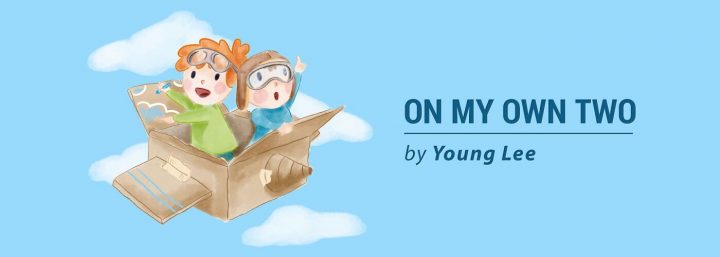Trying Meditation as a Form of Self-care
Written by |

Column by Young Lee
A high school Spanish teacher introduced me to the practice of meditation. A few times a semester, he would begin or end his class with it.
During these sessions, he would suggest that my classmates and I sit in a relaxed position, head on our desks or back straight, with our eyes closed. And then he’d pace the room, guiding us through imagery that would lull us into a meditative state.
Although I’m convinced he was a deep believer in the benefits of mediation, I think he was just as interested in its fringe benefit: calming rowdy students.
This experience came to mind a few weeks ago when I had breakfast with Dr. Raghav Govindarajan before the CMTA Patient/Family Conference started. We were talking about the anxiety, stress, and muscle pain that are symptoms of Charcot-Marie-Tooth disease (CMT). He brought up meditation — a topic that he went into further during his conference presentation.
I’ve been trying to incorporate intentional meditation practices into my life ever since.
Mounting evidence underscores the benefits of meditation. Some studies show it can reduce blood pressure, stress, pain, and inflammation — symptoms of particular interest to many CMT-ers.
I’ve never been a skeptic of what I understand to be a form of mindfulness meditation. I may not have known about all of its benefits, but I always felt that going into a meditative state was a nice way to relax. I just never called it “meditating” when I was younger.
I used it in high school marching band practice during extended periods of parade rest, a position we defaulted to while our band director gave attention to other sections. I would stand with my left hand at the small of my back, right hand holding my trumpet, and my feet shoulder-width apart.
I would close my eyes and focus on my breathing. Time would seem to slow. I’d feel my muscles tense and relax as they worked to keep me upright and straight against the wind.
When my band director would call us to attention, I’d open my eyes and feel them dilate to take in a world I had almost forgotten.
I’ve also found meditation to be a nice escape during dental appointments.
Despite my appreciation for mindfulness meditation, I never incorporated it into my life with any regularity. However, Dr. Govindarajan suggested at the conference that it’s important to be proactive with self-care.
I’ve tried to meditate a bit more during the past two weeks and have developed a few practices:
- I like meditating in the evening while on my bed so I can use my headboard for back support. Sometimes I cross my legs and keep my hands clasped together, but I keep my eyes closed.
- Although some say noise doesn’t help meditation, I like to listen to the “space deck” sound from my Amazon Alexa’s “ambient noise” skill.
- I try to meditate for at least 10 minutes, but I shoot for 20 minutes.
- I’ve found that I don’t like guided meditation. I don’t like imagining a “ball of energy in my stomach” or a “magical elevator that takes me deeper and deeper into my own psyche.” Instead, I focus on the sensations within my body — my breathing, my digestion, my heartbeat, and pulse.
I haven’t noticed any big changes in my life, but I do have some small observations.
I’ve found it’s a nice way to check up on your body both physically and mentally. Practicing mindfulness meditation reminded me of a conversation I had with my therapist friend. She told me that being mindful of our emotions can help us better manage them before they get out of control.
Meditating more frequently also reminds me of how antithetical it is to the idea of “emptying your mind” — a thought I find off-putting. Mindfulness meditation — as I understand it — is allowing yourself to focus on the present instead of worrying about deadlines, schedules, or regrets.
When I focus on the sensations I feel within my body while it is in a relaxed state, it’s easy to keep track of how my body is that day. Some days, I would notice things I might not have without that moment to myself. “Oh, I’m slightly constipated,” I would realize some days. Other days it would be, “Wow, my feet are throbbing after that workout.”
I can’t say I have experienced anything life-changing during my short experiments with meditation, but I’m interested to see where this practice takes me. If nothing else, I think meditation helps me sleep better.
***
Note: Charcot-Marie-Tooth News is strictly a news and information website about the disease. It does not provide medical advice, diagnosis, or treatment. This content is not intended to be a substitute for professional medical advice, diagnosis, or treatment. Always seek the advice of your physician or other qualified health provider with any questions you may have regarding a medical condition. Never disregard professional medical advice or delay in seeking it because of something you have read on this website. The opinions expressed in this column are not those of Charcot-Marie-Tooth News or its parent company, Bionews Services, and are intended to spark discussion about issues pertaining to Charcot-Marie-Tooth.





Leave a comment
Fill in the required fields to post. Your email address will not be published.